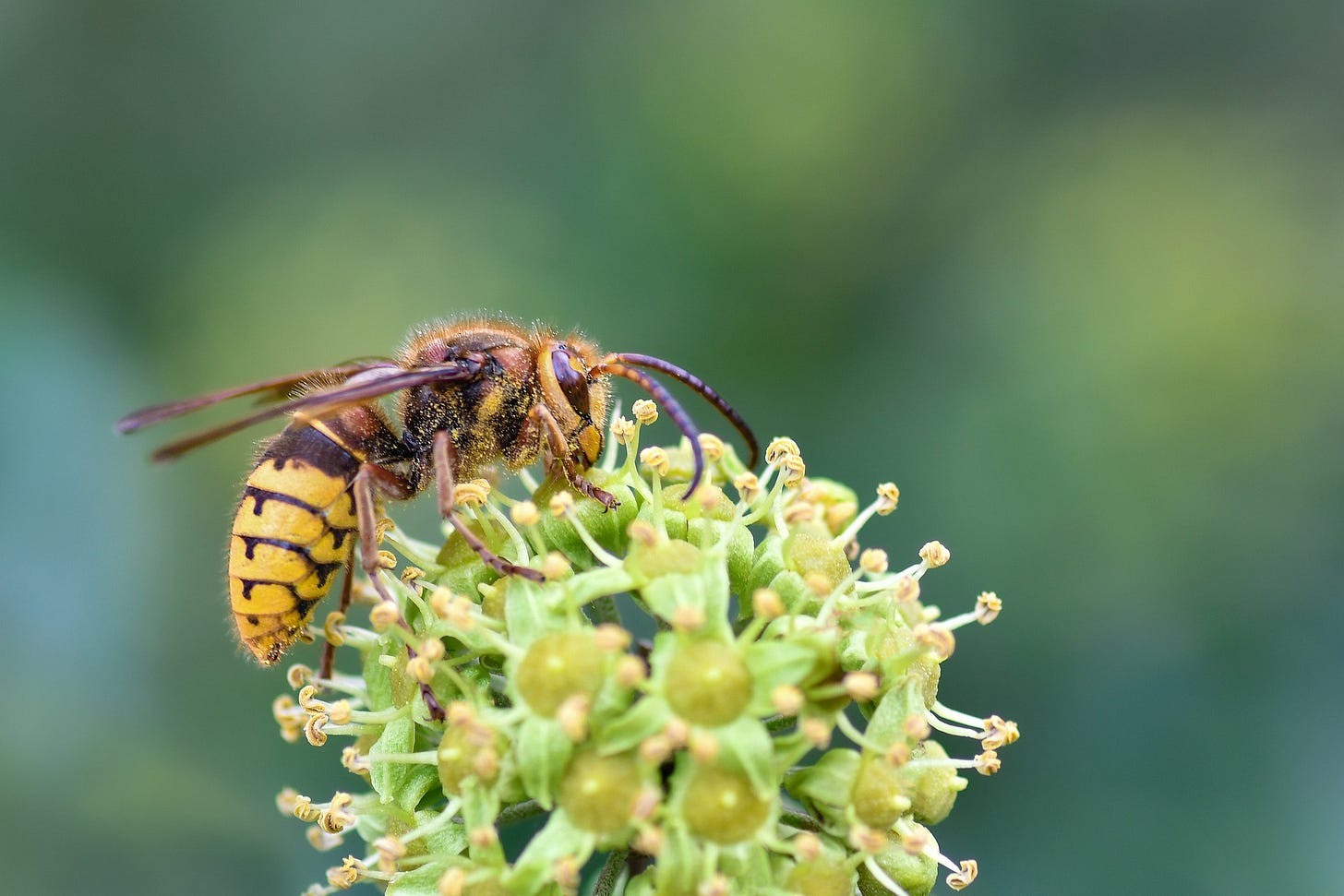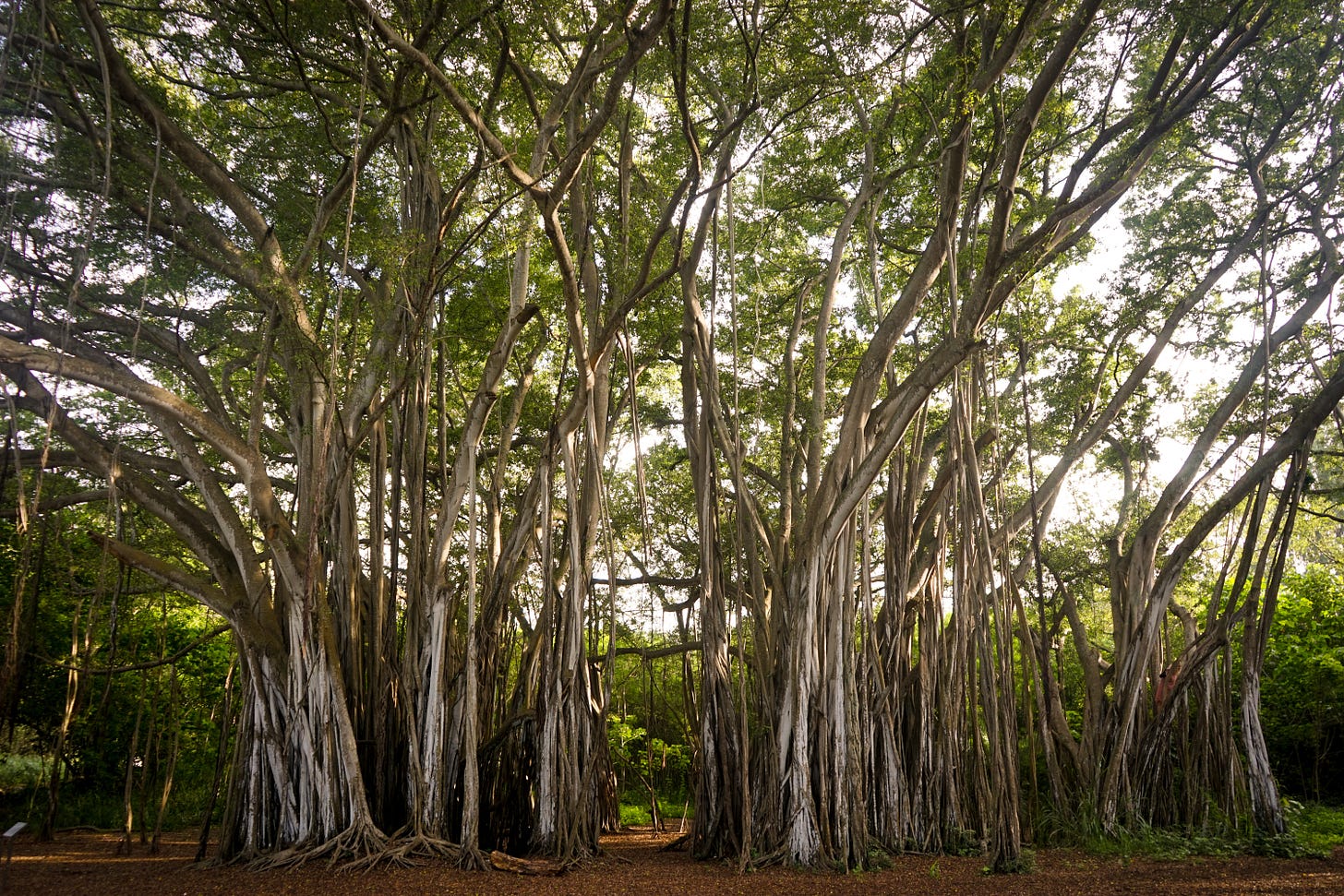I’ve been stung three times in the last month by various types of wasps, one of which, just days ago, cut short a much-anticipated backpacking trip. Wasps have narrowly out-performed “talking over loud music” on my list of things I hate, since a drive-by yellowjacket double-sting led me to the ER a few years ago. In an attempt to cope with a reality that appears to be growing more frequent with age—and as I appear to grow sweeter—my lovely girlfriend recommended an apt episode of the Ologies with Alie Ward podcast titled “Spheksology (WASPS) with Eric Eaton”.
Ologies is a honest and always silly podcast dedicated to the study of (fill in the blank), hosted by the creative and goofy Alie Ward. In this episode Alie interviews her guest Eric Eaton about his new book, “Wasps: The Astonishing Diversity of a Misunderstood Insect”. While I recommend you listen for yourself, here are my main takeaways:
Before listening to Eric discuss the purpose of wasps, I thought of them as hedonistic stinging assholes with no additional value. That’s not how evolution and natural selection operate. I’ve since found that understanding an organism’s place in the larger ecosystem allows one to respect and, perhaps, hate them a tad bit less.

Let’s start by giving wasps the distinction they deserve, encompassing their own sub-category of Hymenoptera insects, just as bees and ants are their own category. Outside of the common yellowjackets, European hornets, bald-face hornets, and paper wasps, there are actually tens of thousands of wasp species, divided between social and solitary sup-groups. Many wasps are predatory and beneficial for gardens and crop fields, limiting the number of aphids, grasshoppers, caterpillars and other pests. In recent years, there’s even been research which suggests specific wasp venoms can target cancer cells, while avoiding normal cells.
Tangent: I’m currently reading The Overstory, an eco-fiction novel of epic proportion that has already and forever filled my mind with admiration and respect for the overlooked role of trees—another neighbor of ours in distress. One passage in particular on page 81 opened my eyes to the expansive symbiotic relationship between insects and trees. It turns out, there are more than 750 species of Ficus (fig trees) in the world, each having co-evolved alongside a unique species of fig wasp responsible for pollinating the fruit.

So maybe wasps aren’t actually hyper-aggresive dicks? (I can feel the cognitive dissonance as I type.) Like so many other misunderstood creatures, we’ve given them a label based on humans’ intrusive interactions with them. A wasp doesn’t know their nest or hive happens to be right above your backdoor, or under your deck, they’re simply protecting the colony when they resort to stinging. We don’t fault a bear for protecting themselves or their cub, or for sharks thinking humans are some other ocean mammal. Instinct is instinct, and sometimes ours appears to be ignorance and blame.
Wasps are the type of neighbor who grabs their morning paper in an open robe, mows their lawn at 6 am, and adamantly comes over to comment/critique any outdoor projects you have going on—but one in ten times, they’ll have something to teach you. While I’m not in love with wasps yet, I respect them more than I did a week ago and I hope you can too.
Have a great Tuesday :)
-Kyle




You’re asking a lot from me…love my wasp neighbor. I will certainly muse on this!